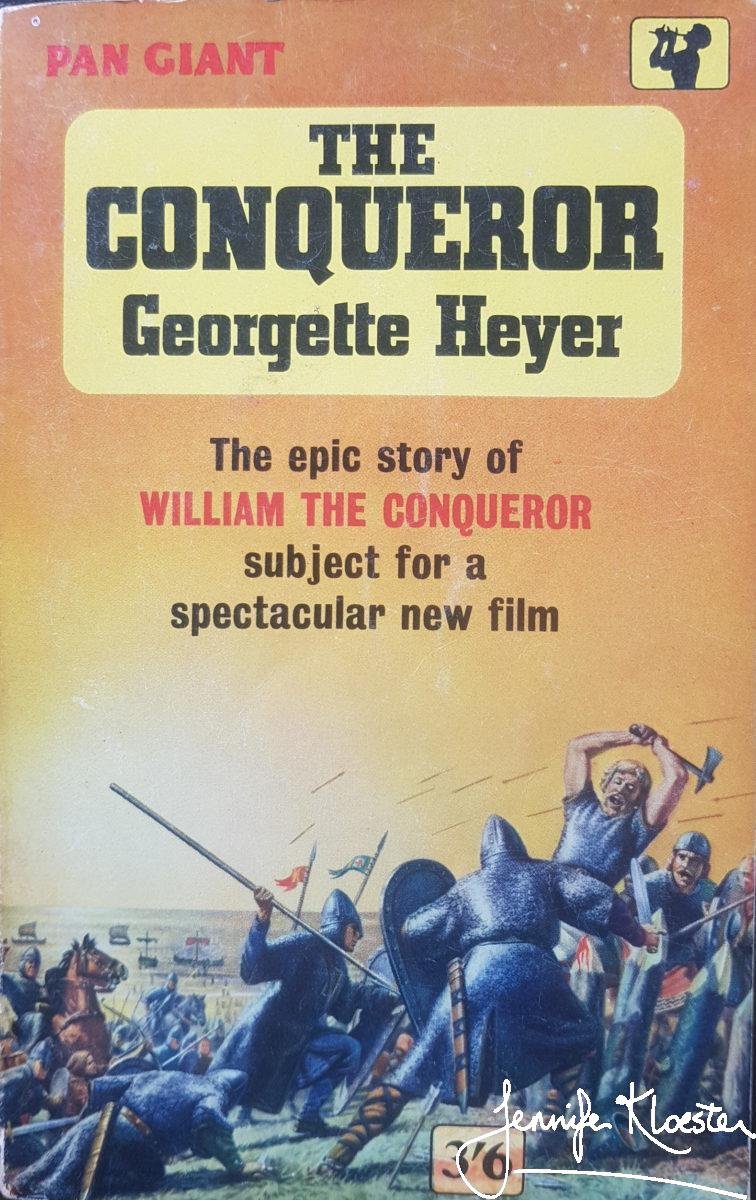Early in 1930, soon after she and Ronald returned to London from Macedonia, Georgette Heyer decided to take a deep dive into history and write her most serious historical novel to date. The book was to be The Conqueror – a retelling of the story of William the Conqueror from his birth in France in 1027 to his coronation in Westminster Abbey in 1066. It was a hugely ambitious project and one which would require an immense amount of research but Georgette was keen to try her hand at the sort of historical novel that her good friend Carola Oman was writing. Carola’s novel Crouchback had been published the previous year to good reviews and Georgette would eventually dedicate The Conqueror to her friend:
To CAROLA LENANTON
In friendship and appreciation of her own incomparable work
done in the historic manner dear to us both.
Georgette Heyer, The Conqueror, Heinemann 1931.

The 1931 first edition jacket of The Conqueror 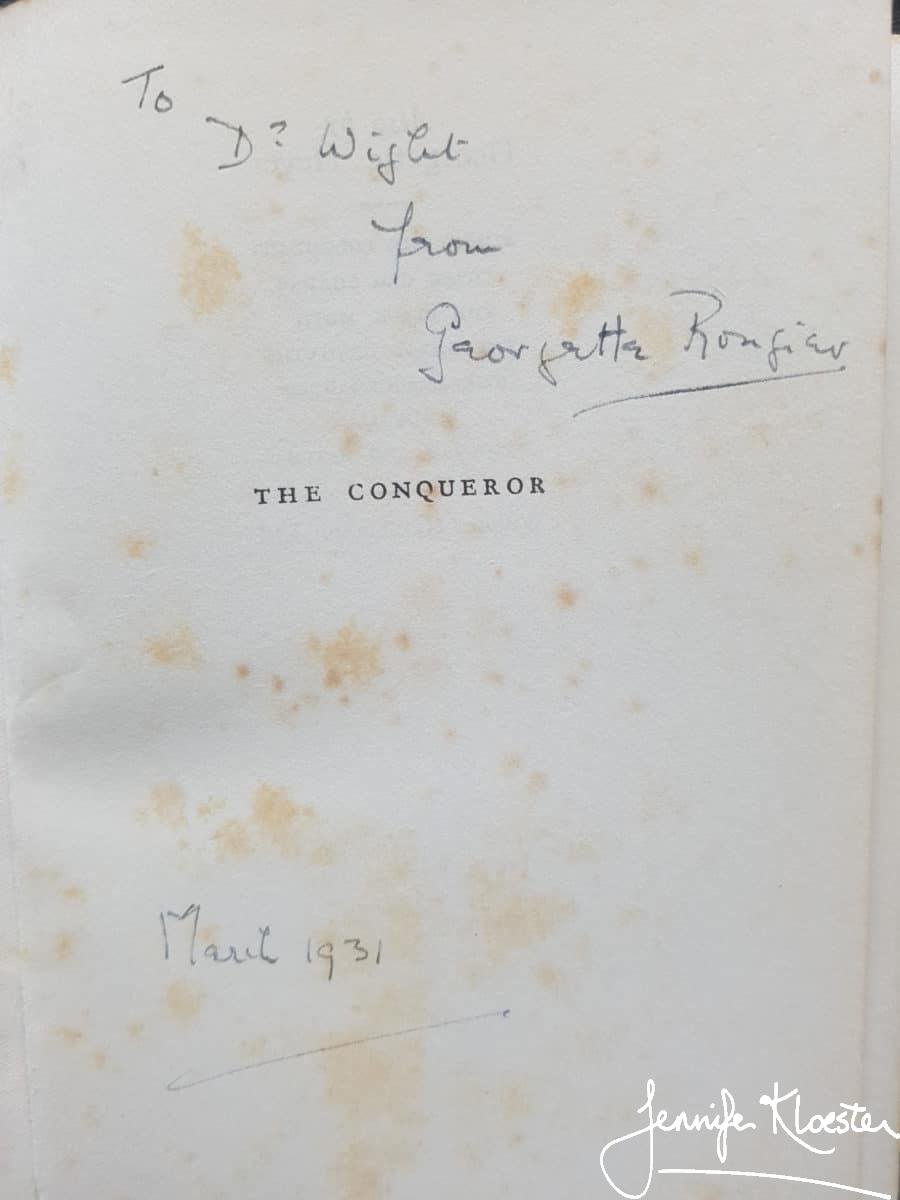
Georgette signed this first edition copy to a Dr Wight but their connection is unknown
Georgette immersed herself in the available sources and made good use, in particular, of J.R. Planché’s The Conqueror and his Companions (1874). The was beset with challenges and it is a testament to Heyer’s skill that she managed to corrall her material into such a lively, vivid novel. As well as depicting a large cast of historical characters – all of whom she researched throughly – she created a number of fictional characters so that her readers could “see” the characters, the action and the scenery. First among these is Raoul de Harcourt, who becomes William’s most loyal follower. It is Raoul’s determination to stay in the thick of things that enabled Georgette to describe so many historical scenes so vividly. Raoul also becomes the glass through which WIlliam the Conqueror is seen and measured for Raoul does not always approve of his master’s judgement or actions. Georgette also gave William a jester, ‘Galet’, a character undoubtedly inspired by the wise fool in Shakespeare’s King Lear and by Walter Scott’s fool, Wamba, in Ivanhoe. The cast of characters is large and complex and years later Georgette acknowledged some of the challenges she had faced in writing The Conqueror:
What a lot of work I put into it! And how difficult it was to correlate the various contemporary (and largely inaccurate) accounts of William’s Life and Times – a task not made easier by the fact that, at that date, hardly anyone had a surname, and that the Chroniclers bestowed Christian names in a somewhat haphazard way, Ralph de Toeni, for instance, appearing, indifferently, as Ralph, Raoul, Reynaud, and Richard! And, even worse, that awful Fitz, meaning “the son of.” All very well if the character was historically important, or if his father had an unusual name, such as Osbern; but although the student of the period knows All About William Fitzosbern, few could be expected to recognize William Fitzwilliam as his son. Well, not at a glance, anyway!
Georgette Heyer
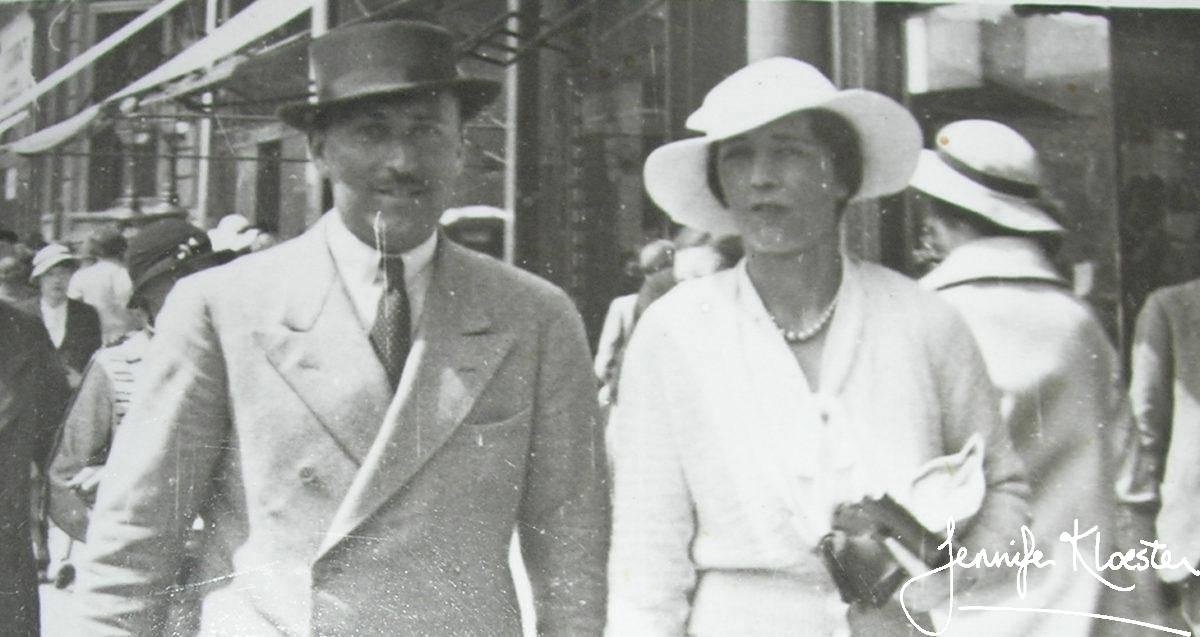
Determined to recreate the past as accurately as she could, Georgette and Ronald also travelled to Normandy to gather material for the book. It must have been a fascinating journey travelling about northern France, visiting the sites of William’s battles and sieges in order to gain a sense of the physical landscape and see the places which had born witness to so many of the Conqueror’s exploits. It is hard not to be impressed by Heyer’s grasp of her subject and of her ability to distill so much historical detail into a readable fictional account. From any point of view The Conqueror is a significant achievement.

After reading widely on the subject, Georgette divided The Conqueror into five parts and took great care to reproduce the Norman and Saxon courts as vividly as she could without overwhelming her reader with slabs of historical detail. She also enlisted Ronald’s help – just as she had done with Beauvallet – and he proved very effective in finding bits of useful information with which she could flesh out the story and bring her characters to life. She later acknowledged her husband’s contribution to the book with one of her characteristic tributes on the flyleaf of hisfirst edition copy:
‘Here is THE CONQUEROR for Ronald, with acknowledgements for his watchfulness & care in all such matters as Bear-fights, Cavalry-charges, Distances, & Male-Etiquette and with love from George.’
Georgette Heyer, Dedication, The Conqueror, 1931.
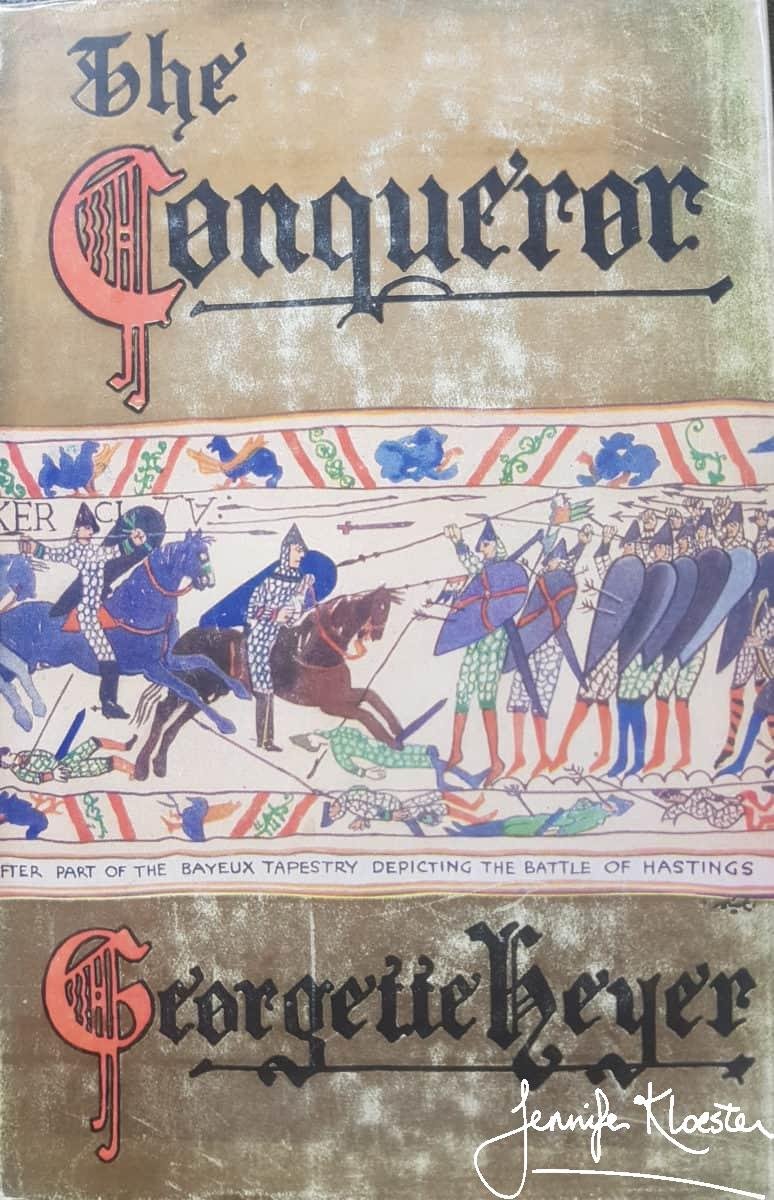
The 1933 UK edition published by Heinemann 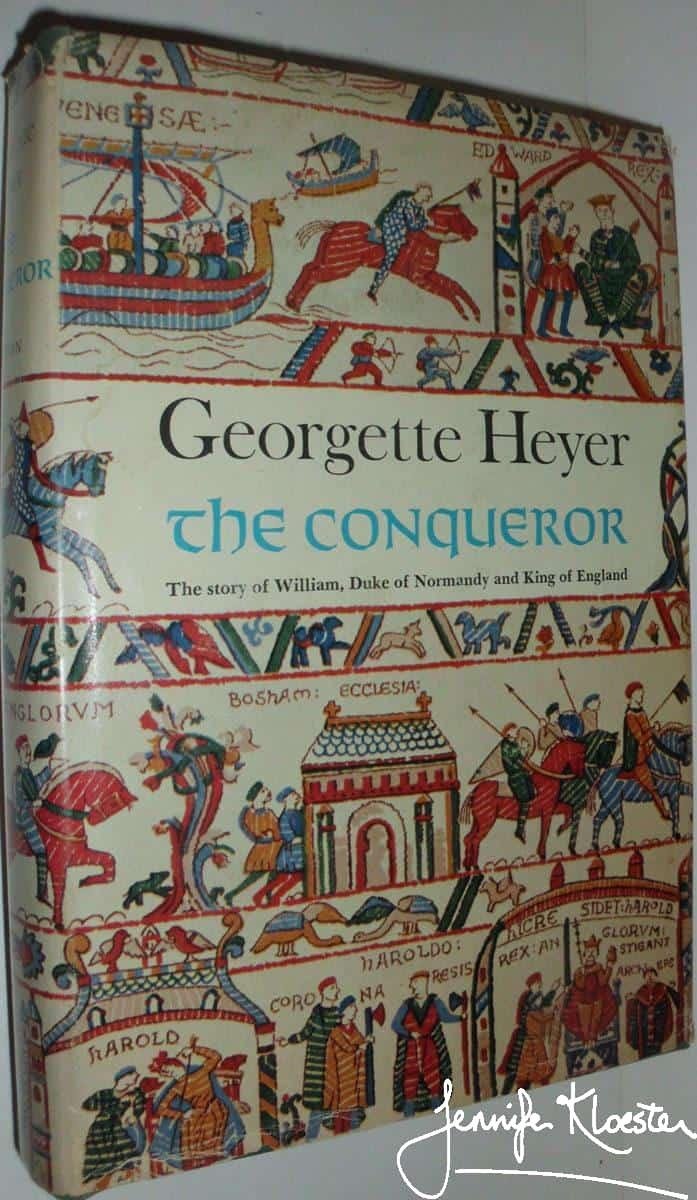
The 1966 US edition published by Dutton for the 900th anniversary of the Battle of Hastings
Georgette finished The Conqueror late in 1930. It had not been an easy book to write, and halfway through she had felt a sudden anxiety about it, prompting a letter to her agent in April of that year in which she expressed some of her uncertainty:
I have finished Part II, 60,000 words perpetrated already. I shall have to cut it a bit, shan’t I? William has now married his Matilda, & I approach what I think is going to be the most difficult part of the five – “The Might of France” I don’t know what Heinemann will say. Sometimes I think I’ve written a book heavy as lead; at others I don’t think it’s so bad. Carola likes it; Joanna Cannan says it is the most interesting historical novel she has read, but I fear she is partial and prejudiced.
Georgette Heyer, letter to L.P. Moore, April 1930.
Her fears were unwarranted for The Conqueror was a decided success and Georgette soon earned out the £300 advance against royalties which she had received for the novel. In its first six years The Conqueror was reprinted eight times and thirty-five years later, the US publisher, Dutton, released the novel to mark the 900th anniversary of William the Conqueror’s successful invasion of England. The jacket must have pleased Georgette at least as much as the long review in Best Sellers which ended with a glowing account of her scholarship and skill:
Her novel is primarily valuable, however, not so much as a portrait of a man, as it is a period in the history of Western Europe. The Conqueror grew out of an incredible amount of historical research into the way of life, the way of speech, the way of thought, and feeling, and praying in the eleventh century. Without sacrificing the flow of her plot, Miss Heyer conveys an understanding of this period, more authentic as well as more colorful than many historical tomes. It is obvious in reading this novel that Georgette Heyer, who has previously published over 30 historical romances, is indeed mistress of her craft.
Genevieve M. Casey, Best Sellers, 15 November 1966, pp309-10.



